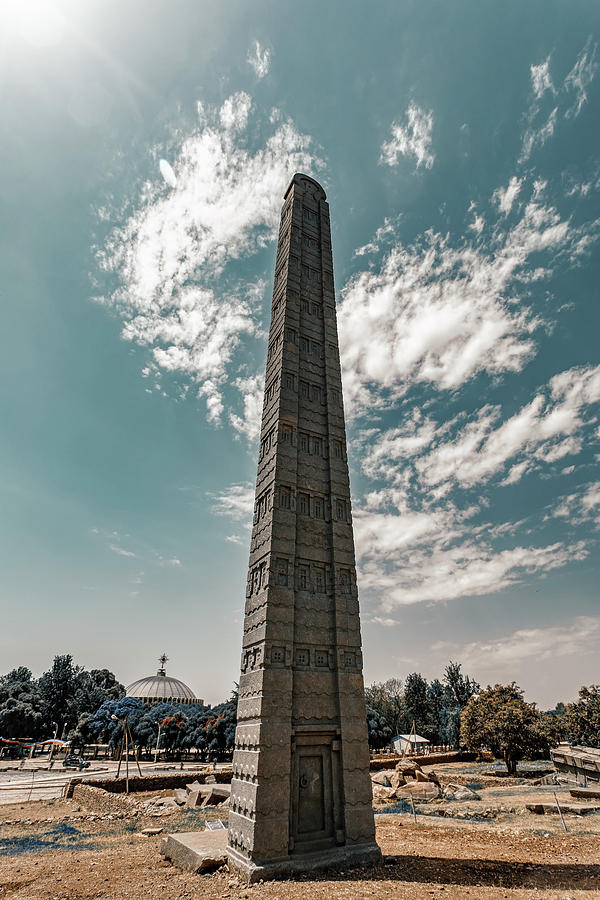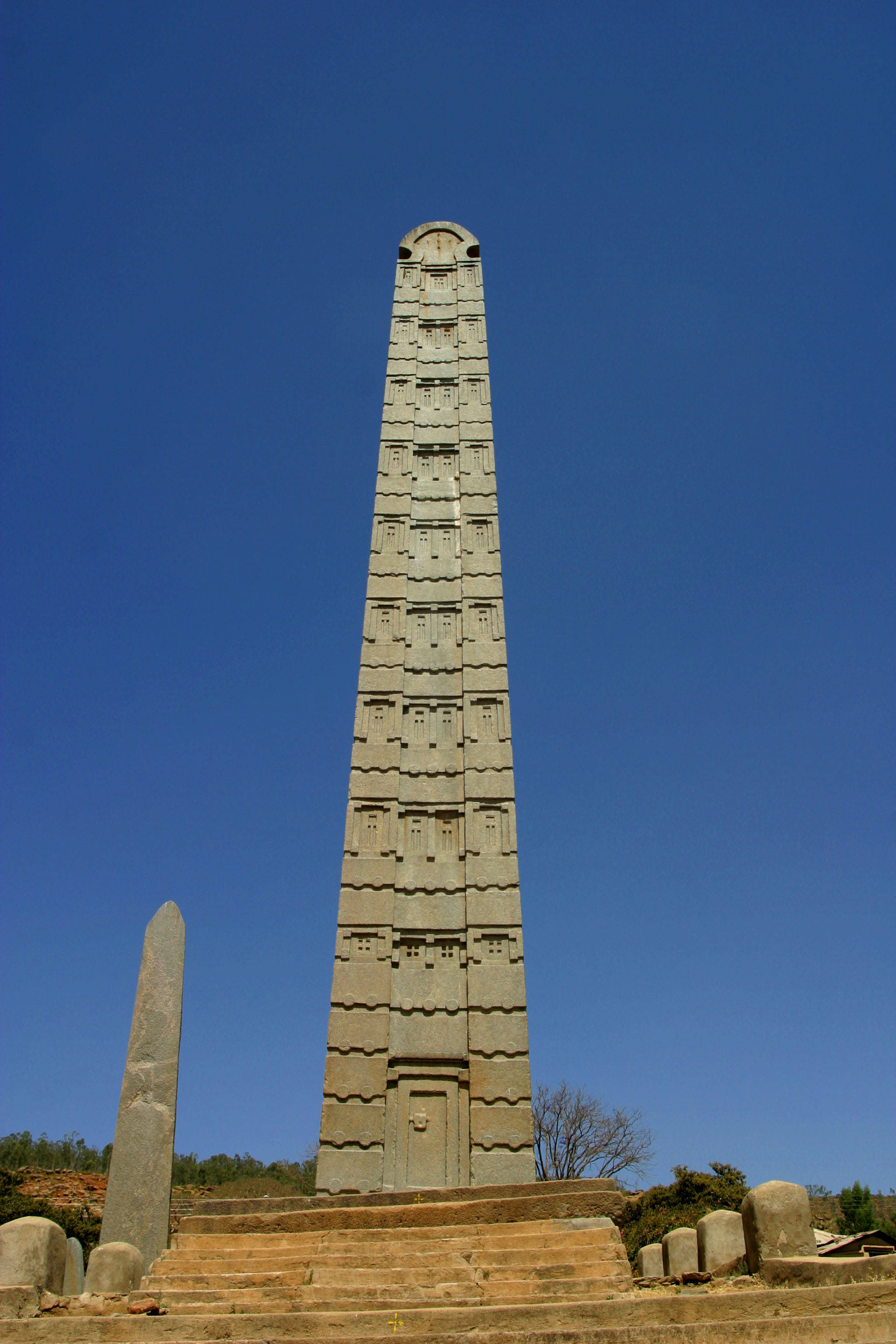The Aksum Obelisk Ethiopia

Aksum, a city in northern Ethiopia, is brimming with rich cultural history and remarkable landmarks. Located at an altitude of more than 2,000 metres, it's a UNESCO World Heritage site and is considered to be one of Ethiopia's holiest cities. Aksum's ancient obelisks are a testament to the flourishing civilization that once thrived in this region.
The obelisks of Aksum, also known as steles, are monumental pillars that were erected by the civilization of the Kingdom of Aksum. They were constructed between the 3rd and 4th centuries AD, and are some of the largest single blocks of stone to have been transported and erected by humans without the use of modern technology.
These obelisks were built as monuments to important people or events and were usually erected in pairs. The tallest of these obelisks, the Great Stele, stood at a staggering 33 metres tall, but unfortunately collapsed during erection and broke into pieces. In 1937, the ruler of Italy, Benito Mussolini, ordered it to be taken back to Italy, where it was eventually reconstructed in 2005 and placed on display at the Aksum Obelisk Park.
The obelisks are made of granite, a rock that is not found in this part of Ethiopia. This suggests that they were transported from quarries that were located hundreds of kilometers away, an indication of the remarkable engineering and transportation abilities of the ancient Aksumites.
Not only do these pillars showcase the technical prowess of the ancient civilization, but they also provide important clues to the society's religious and political beliefs. The obelisks were often inscribed with texts that mention the power and deeds of Aksumite rulers, as well as their achievements and affiliations.
A visit to the obelisks will take you back in time and provide a glimpse into ancient African civilization. But there's more to discover in Aksum beyond these remarkable monuments.
History
Aksum was once the centre of the Kingdom of Aksum, a powerful empire that controlled much of what is now Ethiopia, Eritrea, and parts of Sudan. The city was a major hub of trade between the Greco-Roman world and Africa, and it was also an important center for the spread of Christianity in the region during the 4th century.
The kingdom was famous for its production of gold, ivory, and precious stones. It was also the first African nation to mint its own currency. The ancient city is surrounded by several monolithic stelae, still partially erected, marking royal graves or important battles.
Travel Tips
Aksum is a holy city and visitors are advised to dress appropriately. Shorts, tank tops, and revealing clothing are not acceptable, and you should remove your shoes before entering any religious site.
The obelisks are located in the Northern Stelae Park, just outside the town center. It's advisable to hire a local guide to learn about the history and significance of these structures. The park is open every day, and tickets are required for entry.
Aksum is connected to the rest of the country by a network of roads and is located just a few hours' drive from the nearby city of Adigrat. There is also an airport in the nearby city of Axum.
Other attractions include the church of St. Mary of Zion, which, according to local tradition, houses the Ark of the Covenant, the palace of the Queen of Sheba, and the Tomb of Kaleb.
FAQ
What is the significance of the obelisks in Aksum?
The obelisks of Aksum were erected as monuments to important people or events and were usually erected in pairs. They provide important clues to the society's religious and political beliefs and showcase the technical prowess of the ancient civilization.
Why were these obelisks built?
The obelisks were built as monuments to important people or events and were usually erected in pairs. They were often inscribed with texts that mention the power and deeds of Aksumite rulers, as well as their achievements and affiliations.
What is the best time to visit Aksum?
The best time to visit Aksum is during the dry season, which runs from October to February. This is the best time to see the monuments, as they are not likely to be covered in fog or rain. However, the area can get quite crowded with tourists during this time, so it's a good idea to plan your visit in advance.
Are there any dress codes for visiting Aksum?
Aksum is a holy city, and visitors are advised to dress appropriately. Shorts, tank tops, and revealing clothing are not acceptable, and you should remove your shoes before entering any religious site.
What other attractions are in Aksum?
Apart from the obelisks, there are several other attractions in Aksum including the church of St. Mary of Zion, the palace of the Queen of Sheba, and the Tomb of Kaleb.
Can I hire a local guide in Aksum?
Yes. It's advisable to hire a local guide to learn about the history and significance of the ancient monuments in Aksum. There are several professional guides who offer their services in the area.
Aksum is a city with a rich history and cultural heritage. It's a must-visit destination for anyone who is interested in ancient civilizations, architecture, or African history. With its remarkable obelisks, stunning churches, and intriguing archaeological sites, this city is a true gem of Ethiopia.



Post a Comment for "The Aksum Obelisk Ethiopia"